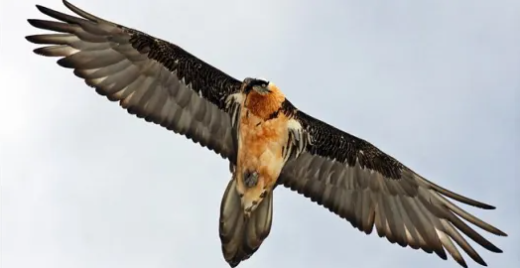Crete, the largest of the Greek islands, is renowned for its diverse landscapes, rich history, and vibrant culture. Beyond its human heritage, the island is home to an extraordinary array of wildlife, offering unique encounters for nature enthusiasts. From its rugged mountains and lush valleys to its coastal waters and isolated islets, Crete provides a habitat for a variety of species, some of which are found nowhere else in the world. Exploring Crete’s wildlife is not just an adventure; it’s a journey into the island’s natural history and its ongoing conservation efforts.
The Cretan Wild Goat: Kri-Kri
One of Crete’s most iconic wildlife species is the Cretan wild goat, known locally as the Kri-Kri (Capra aegagrus cretica). This majestic animal, distinguished by its curved horns and agile movements, is native to the island and a symbol of Crete’s rugged wilderness.
- Habitat and Behavior: The Kri-Kri is primarily found in the remote mountain regions and uninhabited islets like Agioi Theodoroi, also known as Thodorou. These goats are incredibly agile, adept at navigating the steep and rocky terrain of the island’s gorges and cliffs.
- Conservation Efforts: Once facing near extinction, the Kri-Kri is now protected under Greek law, with several conservation programs in place to ensure its survival. The Samaria National Park, a UNESCO Biosphere Reserve, is one of the key areas where these goats thrive, offering visitors the chance to observe them in their natural habitat.
Birdwatching: A Haven for Avian Life
Crete is a birdwatcher’s paradise, with a rich diversity of avian species that either reside on the island or migrate through it. The island’s varied ecosystems provide critical habitats for both resident and migratory birds.
- Griffon Vultures: Among the most spectacular birds of Crete are the Griffon vultures (Gyps fulvus). These large birds of prey can be seen soaring high above the island’s mountainous regions, particularly in the Gorges of Kourtaliotiko and Kotsifou. With wingspans reaching up to 2.8 meters, their sight is awe-inspiring.
- Eleonora’s Falcon: Another remarkable bird is Eleonora’s falcon (Falco eleonorae), which nests on coastal cliffs and small islets. This species is unique for its late breeding season, timed to coincide with the autumn migration of small birds, which provide food for its chicks.
- Wetland Birds: The wetlands of Elounda and Lake Kournas are vital stopovers for numerous migratory birds, including herons, egrets, and flamingos. These areas offer excellent birdwatching opportunities, especially during the migration periods in spring and autumn.
Marine Life: Underwater Encounters
The waters surrounding Crete are teeming with marine life, making it an ideal destination for diving and snorkeling enthusiasts. The island’s marine biodiversity includes everything from vibrant coral reefs to large marine mammals.
- Mediterranean Monk Seal: One of the most endangered marine mammals in the world, the Mediterranean monk seal (Monachus monachus), finds refuge in the secluded caves and coastal waters of Crete. These seals are a rare sight, but conservation efforts are underway to protect their habitats and increase their numbers.
- Loggerhead Sea Turtles: The beaches of Rethymno and Chania are important nesting sites for the loggerhead sea turtle (Caretta caretta). Conservation organizations, such as Archelon, the Sea Turtle Protection Society of Greece, work tirelessly to protect these nests and ensure the hatchlings make it safely to the sea.
- Diving Adventures: Crete’s underwater world is rich with colorful fish, octopuses, and the occasional glimpse of larger species like groupers and barracudas. Popular diving spots include the underwater caves of Agia Pelagia and the sunken city of Olous near Elounda.
Insects and Flora: A Microcosm of Diversity
Crete’s wildlife is not limited to its larger animals and birds; the island is also home to a fascinating array of insects and plants, many of which are endemic.
- Cretan Butterflies: The island hosts a variety of butterfly species, including the Cretan festoon (Zerynthia cretica), a striking butterfly found only on Crete. The island’s diverse habitats, from coastal areas to alpine meadows, provide the perfect environment for these delicate creatures.
- Unique Flora: The flora of Crete is equally impressive, with numerous endemic plants. The island’s botanical treasures include the Cretan ebony (Ebenus cretica) and the rare Cretan orchid (Orchis sitiaca), which attract botanists and nature lovers from around the world.
Responsible Wildlife Tourism
While exploring Crete’s wildlife, it is crucial to engage in responsible tourism practices. Respecting natural habitats, avoiding disturbing wildlife, and supporting local conservation efforts are essential to preserving the island’s biodiversity for future generations.
- Eco-friendly Practices: Opt for guided tours with reputable organizations that follow sustainable practices. This ensures minimal impact on the environment and contributes to local conservation efforts.
- Supporting Conservation: Contribute to or volunteer with local conservation groups dedicated to protecting Crete’s unique wildlife and natural habitats.
Conclusion
Discovering the unique wildlife of Crete offers an enriching experience that goes beyond typical tourist attractions. From the agile Kri-Kri goats navigating the rocky terrain to the majestic Griffon vultures soaring above, and the endangered monk seals lounging in coastal caves, Crete’s wildlife encounters are as diverse as they are unforgettable. These natural treasures, combined with the island’s rich cultural heritage, make Crete a must-visit destination for anyone passionate about nature and conservation. By exploring and appreciating the island’s wildlife responsibly, visitors can help ensure that these unique species continue to thrive for generations to come.


